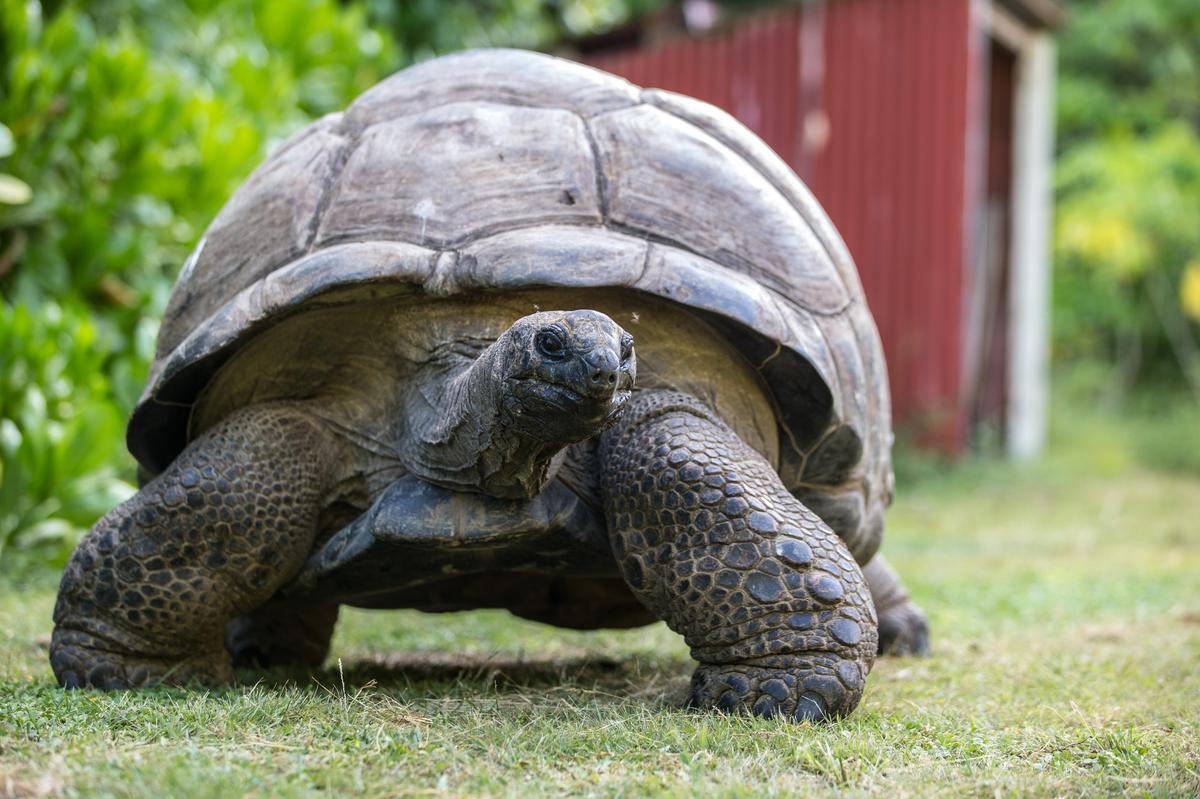
The view from Hilton Seychelles Labriz Resort and Spa at Silhouette Island
On his lazy morning stroll, Jonathan hears the familiar footsteps of Rico Payet, who is bringing him some leaves to chew. Jonathan, an Aldabra giant tortoise basks in the sun at Hilton Seychelles Labriz Resort and Spa at Silhouette Island. His age is not exactly known, but he has other friends, not too far away in the island, who have crossed 100 years and are still going strong.
The Aldabra Giant Tortoises are the second-largest species of tortoise in the world, next to the Galapagos, and can weigh up to 250 kg.
“They are truly iconic,” says Rico, assistant conservation officer with the Island Conservation Society (ICS). “Their numbers dwindled significantly from the late 1800s till the 1970s due to hunting and habitat destruction. However, they have made an impressive recovery. Today, they have been relocated across various islands in Seychelles to boost their chances of survival.”
The whole of Silhouette Island is a national park. So, tourists who arrive on the daily ferry to this picturesque island can, apart from taking pretty selfies and indulging on sea food, also witness this ecological biodiversity.

The Aldabra giant tortoise
An exciting night walk here gives tourists a chance to catch a glimpse of the elusive sheath-tailed bat, known locally as Sousouri Bannann. This bat, one of the rarest in the world, with only 83 left globally, can be found only on Silhouette Island and the capital, Mahé. “As the species is critically endangered, all our efforts need to be research-driven. We’re also studying their habitat needs to inform better restoration and management plans, and collaborating with international researchers,” adds Rico.

There are more varieties of unique species that are found only in the Seychelles islands and nowhere else in the world, like the Seychelles magpie robin, the Seychelles white-eye and the sunbird. Also found on the islands are endangered amphibians like the palm frog and Thomasset’s frog. “We also have the Seychelles caecilian, an amphibian that is endemic to the islands,” informs Steven Boodna, an assistant activity manager at Hilton Seychelles Labriz Resort and Spa who regularly shows tourists around the island.
Steven and the ICS team often do little treks and walks, including the Silhouette Native Plants Garden Trail, where visitors can see a wide variety of native plants apart from trying to catch a glimpse of the birds and frogs. This is not just a chance to get away from the hustle and bustle of everyday city life but also an opportunity to learn a thing or two about Nature. “The biodiversity of Seychelles is absolutely critical, not just for ecological balance but also for tourism. The delicate ecosystems here include a mix of endemic species that are found nowhere else in the world. Ensuring that these species thrive is vital not only for the environment but for tourism itself, as visitors come to experience this unique environment,” says Rico.
Because, even as the tortoises are taking slow steps, Seychelles is taking a giant leap.
(The writer was in Seychelles on the invitation of Tourism Seychelles)
How to reach silhouette island
Air Seychelles has a direct flight every week from Mumbai to Mahé; it takes about 4.5 hours to reach. Carriers like Emirates, Qatar Airways offer connecting flights to the destination from other Indian cities.
Once you arrive at Victoria (or Mahe Island), the capital of Seychelles, you need to catch one of the scheduled ferries to head to Silhouette Island (20km), an hour-long ride costing about 120 Euros.
Within the island, the only mode of transportation is rented bicycles or golf carts, only for the guests of Hilton. The population here is less than 300, and consists mostly of workers of the resort.
Published – November 07, 2024 03:02 pm IST

